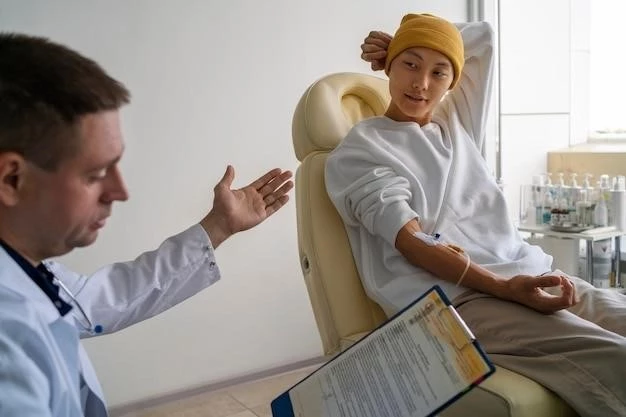Symptoms of Cytomegalic Inclusion Disease
Overview of Symptoms
Cytomegalovirus infection may manifest as mild symptoms or none at all in healthy individuals. However‚ common symptoms in severe cases include fever‚ fatigue‚ muscle aches‚ sore throat‚ swollen glands‚ and weakness. These symptoms can vary based on the individual’s immune status and overall health condition.
Common Signs to Watch For
When experiencing cytomegalic inclusion disease‚ individuals should be alert for symptoms like fever‚ fatigue‚ muscle weakness‚ sore throat‚ swollen glands‚ and digestive issues. Additionally‚ unusual bruising‚ vision changes‚ and neurological symptoms may indicate a more severe infection requiring medical attention.
Treatment Options for Cytomegalic Inclusion Disease
Antiviral Medications
Antiviral medications such as ganciclovir or valganciclovir are commonly prescribed to treat cytomegalic inclusion disease by inhibiting viral reproduction. These medications can help reduce the severity of symptoms and improve outcomes‚ especially in immunocompromised individuals. It is essential to follow the prescribed dosage and duration as directed by healthcare providers to effectively manage the infection.
Supportive Care
Supportive care for cytomegalic inclusion disease focuses on managing symptoms and optimizing overall health. This may include adequate rest‚ hydration‚ and a nutritious diet to support the immune system. Monitoring for complications‚ such as organ involvement‚ and seeking medical attention promptly are crucial aspects of supportive care for individuals affected by cytomegalic inclusion disease.
Prevention of Cytomegalic Inclusion Disease
Hygiene Practices
Hygiene practices play a vital role in preventing cytomegalic inclusion disease. Regular handwashing with soap and water‚ especially after contact with bodily fluids‚ can reduce the risk of transmission. Avoiding sharing personal items like utensils and toothbrushes‚ and properly disinfecting surfaces can also help minimize the spread of the cytomegalovirus.
Avoiding Contact with Bodily Fluids
Preventing cytomegalic inclusion disease involves avoiding direct contact with bodily fluids‚ such as saliva‚ urine‚ blood‚ and semen‚ from infected individuals. Using protective barriers like gloves when caring for infected individuals and practicing safe hygiene measures can significantly reduce the risk of contracting and spreading the cytomegalovirus. It is essential to be cautious‚ especially in healthcare settings or when providing care to vulnerable populations.
Complications of Cytomegalic Inclusion Disease
Impact on Immunocompromised Individuals
Immunocompromised individuals are particularly vulnerable to severe complications from cytomegalic inclusion disease due to their weakened immune systems. The virus can lead to serious conditions such as pneumonia‚ hepatitis‚ retinitis‚ and neurological issues in this population. Close monitoring and prompt medical intervention are crucial to manage these complications and improve outcomes in immunocompromised patients.
Long-term Health Effects
Long-term health effects of cytomegalic inclusion disease can vary and may include chronic fatigue‚ vision problems‚ hearing loss‚ and cognitive impairments. Some individuals may experience recurrent infections‚ particularly if their immune system is compromised. It is essential for healthcare providers to monitor these individuals closely to address any long-term health concerns and provide appropriate care to manage ongoing symptoms.
Diagnosis of Cytomegalic Inclusion Disease
Laboratory Tests
Diagnosis of cytomegalic inclusion disease typically involves laboratory tests to detect the presence of the cytomegalovirus. Blood tests can identify antibodies or viral DNA. Additionally‚ a complete blood count (CBC) may reveal abnormalities such as low platelet counts or atypical lymphocytes. Testing of other bodily fluids like urine or cerebrospinal fluid may also be performed to confirm the infection.
Imaging Studies
Imaging studies‚ such as ultrasound‚ CT scans‚ or MRI scans‚ may be used in the diagnosis of cytomegalic inclusion disease to evaluate organ involvement or detect abnormalities. These imaging techniques can help identify potential complications of the infection‚ such as liver or lung inflammation. Imaging studies play a crucial role in assessing the extent of cytomegalovirus-related damage and guiding healthcare providers in developing an appropriate treatment plan for affected individuals.
Risk Factors for Cytomegalic Inclusion Disease
Weakened Immune System
Individuals with weakened immune systems‚ such as those with HIV/AIDS‚ organ transplant recipients on immunosuppressive therapy‚ or patients undergoing chemotherapy‚ are at higher risk for developing severe cytomegalic inclusion disease. A compromised immune response makes it challenging to control the virus‚ leading to increased susceptibility to infections and potential complications. Close monitoring and preventive measures are essential for managing cytomegalovirus infections in immunocompromised individuals.
Pregnancy
Pregnant women are at risk for cytomegalovirus transmission to the fetus‚ which can lead to congenital cytomegalic inclusion disease. This viral infection during pregnancy poses potential risks to the developing baby‚ including hearing loss‚ vision problems‚ intellectual disabilities‚ and developmental delays. Implementing preventive measures‚ such as practicing good hygiene and avoiding contact with infected individuals‚ is crucial to reduce the risk of cytomegalovirus transmission and protect the health of pregnant women and their babies.

Cytomegalovirus Transmission and Spread
Modes of Transmission
Cytomegalovirus can be transmitted through various routes‚ including close contact with infected individuals‚ exposure to bodily fluids like saliva‚ urine‚ and blood‚ as well as organ transplantation or blood transfusions. Transmission can also occur from mother to child during pregnancy or childbirth. Practicing proper hygiene‚ using protective measures‚ and avoiding contact with potentially infected sources are essential in preventing the spread of cytomegalovirus.
Risk of Infection
Individuals at higher risk of cytomegalovirus infection include healthcare workers‚ individuals with multiple sexual partners‚ newborns exposed to infected mothers‚ and those with weakened immune systems. Close and prolonged contact with infected individuals or exposure to their bodily fluids increases the risk of contracting the virus. Understanding the risk factors and maintaining preventive measures are vital in minimizing the spread of cytomegalovirus and reducing the likelihood of infection among at-risk populations.
Management of Cytomegalic Inclusion Disease
Treatment Guidelines
Guidelines for treating cytomegalic inclusion disease typically involve antiviral medications such as ganciclovir or valganciclovir to combat the virus. The choice of treatment and duration may vary based on the severity of the infection and the individual’s immune status. Healthcare providers may also recommend supportive care measures to alleviate symptoms and promote recovery. Adhering to the prescribed treatment regimen and attending follow-up appointments are essential for effectively managing cytomegalic inclusion disease.
Monitoring and Follow-up Care
Monitoring and follow-up care for individuals with cytomegalic inclusion disease are essential to track the progression of the infection and assess treatment efficacy. Regular medical evaluations‚ laboratory tests‚ and imaging studies may be recommended to monitor the response to antiviral therapy and detect any potential complications. Close collaboration with healthcare providers and adherence to recommended follow-up schedules are crucial in ensuring optimal management of cytomegalic inclusion disease and promoting recovery.
